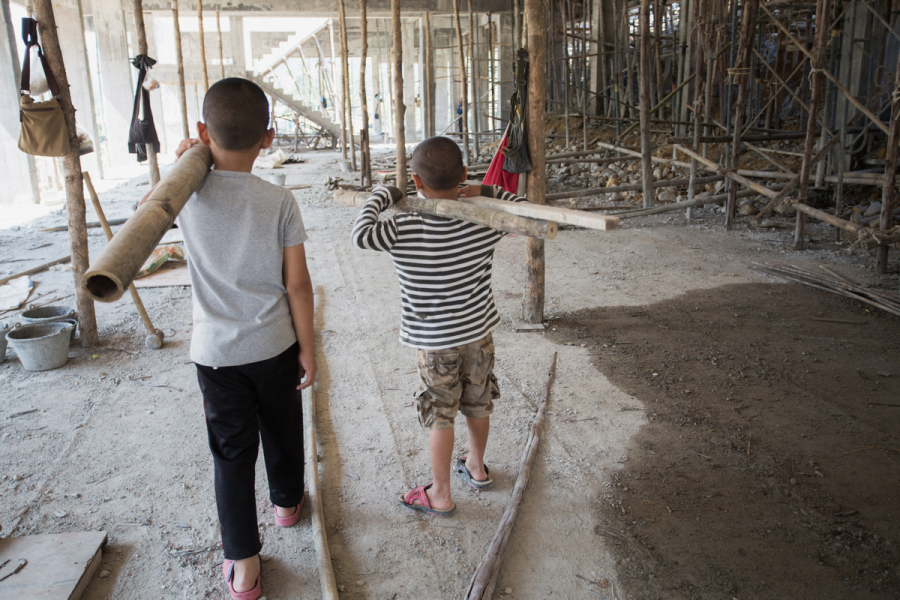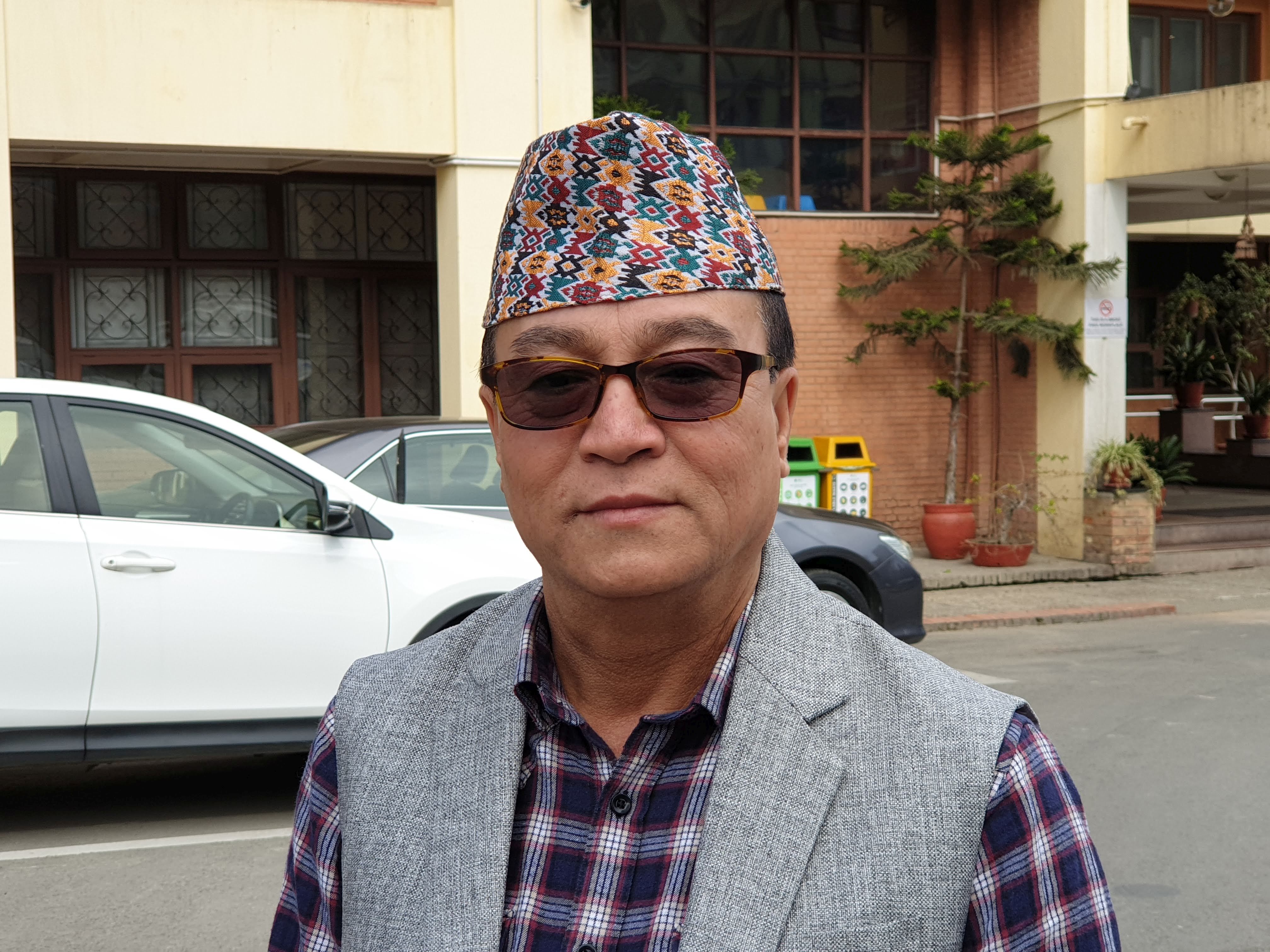Columns
Let our children thrive
We should act to ensure that children are not robbed of their childhood and dreams.
Narayan Bhattarai & Shiva Shanker Dangol
Sunita (name changed), a 15-year-old girl from the Makawanpur district in central Nepal, left her home to work in a carpet factory in Kathmandu three years ago after her mother passed away. Her story perhaps symbolises millions of similar stories of Nepali child labourers, particularly from remote, marginalised communities—forced to migrate internally for survival. After three years of child labour, Sunita was rescued and placed in a rehabilitation centre. She now feels safe to dream again—to be a singer. However, not all children trapped in child labour get a second chance as she did.
According to the Nepal Child Labour Report 2021, a joint publication of the International Labour Organisation and the Central Bureau of Statistics, there are 1.1 million children engaged in child labour in Nepal (between the ages of 5 and 17). That is one in eight children. There are 0.22 million children working in hazardous conditions, and the country’s brick kiln industry harbours nearly 10 percent of the total workforce—around 17,000 child labourers. The country has seen a significant decline in child labour in the last two decades, but our work is far from over. The Covid-19 pandemic has further exacerbated the situation. A recent report by The Human Rights Watch has highlighted how children have become breadwinners for their families due to school closures and their parents’ job loss owing to virus lockdowns.
Multi-dimensional problem
Child labour is multi-layered and multi-dimensional. It is often aided by poverty, an inaccessible education system, and lack of social protection, vulnerability and social norms. It has strong linkages with overall development, particularly the socio-economic condition of the nation. Nepal, with 29 percent of its population in multidimensional poverty, needs to take a closer look at how it is pushing children into labour, but also into a cycle of poverty and often exploitation.
Nepal’s Karnali and Sudurpaschim provinces have the highest proportion of child labour. These provinces are ranked in the lowest second and third positions under the Nepal Human Development Index. Dalits and Janajatis constitute the highest proportion of child labour in comparison to other communities.
Migration is one of the key dimensions of child labour as families devastated by natural disasters often result in vulnerable children becoming prey to traffickers or being lured to work in sectors like the brick industry, carpet factories or domestic work. A joint survey carried out by ILO, UNICEF and the Central Bureau of Statistics shows that 49 percent of Nepali brick kiln workers are out-of-district workers. Out of the total brick kiln workforce, nearly 44 percent are Indian migrants as Nepal shares a porous border with India. It is essential that there are joint efforts from Nepali and Indian authorities to stop the flow of children into Nepali brick kiln industries.
The prevalence of discriminatory practices is also seen as an enabler of child labour. Children from Dalit communities are often reported to leave school due to caste-based discrimination, despite laws that have banned it. There have been cases of landlords charging an annual interest rate of as high as 120 percent on loans from borrowers in the Haruwa-Charuwa communities in the eastern Tarai. They consist of agriculture workers, mostly from the Dalit communities, who depend solely on the landlords for their survival. The interest rate acts as a tool to keep them trapped in poverty, often forcing their children to work in debt bondage. Nepal lacks a comprehensive forced labour act that defines forced and bonded labour as criminal offences and ensures their proper remediation, which is vital in fighting child labour too.
Holistic approach
These multi-faceted impediments illustrate that child labour elimination needs a holistic approach through concerted efforts from all the stakeholders. The strategies and actions need to be reshaped to reach the goal of eliminating child labour by 2025 (as stipulated in the Sustainable Development Goal target 8.7). Nepal has made some progress in formulating laws and policies to eliminate child labour. It has met international standards through an amendment to the Child Labour Regulation and Prohibition Act which increased the minimum age for hazardous occupations from 16 to 18 years.
Nepal has also adopted a free and compulsory education law to ensure the education rights of children up to the age of 13 years. Despite a gap of one year to enter the labour market (children can start light work from the age of 14 years according to the Child Labour Regulation and Prohibition Act 2000), this law is central to ensuring the children’s right to education. The government of Nepal has also adapted a new master plan to eliminate child labour by 2025. It intends to take an inclusive approach by empowering local governments to declare Child Labour Free Zones. It is imperative that all concerned governmental, social partners and non-governmental agencies to collaborate and contribute for effective implementation of the master plan.
The role of workers’ organisations is also critical in eliminating child labour. The brick kiln survey shows that only 0.4 percent of the workers responded to being a member of any union and only 4 percent responded to knowing about the minimum wages and labour laws. Unless workers are aware of their fundamental rights and child labour provisions, they are often in weak bargaining positions with their employers.
Interventions to eliminate child labour need to target vulnerable and marginalised communities with provisions of livelihood and alternative income generation activities. It is equally important to monitor and enforce strict measures in case of violations of child labour laws and regulations. Enhancing the capacity of authorities for labour inspection is crucial for enforcing such laws, as is strengthening Nepal’s social workforce. Withdrawing children from child labour situations is important. It is also crucial to address the root causes of child labour through early identification mechanisms, and provide support to vulnerable families and children. In this pandemic context, where UNICEF Child and Family Tracker has highlighted that 50 percent of households have lost a source of income, it is urgent that we join forces with federal and local governments as well as development partners to support sustainable social protection programmes to keep our children out of child labour. Ending child labour is possible if we all act together—now.




 9.12°C Kathmandu
9.12°C Kathmandu
















